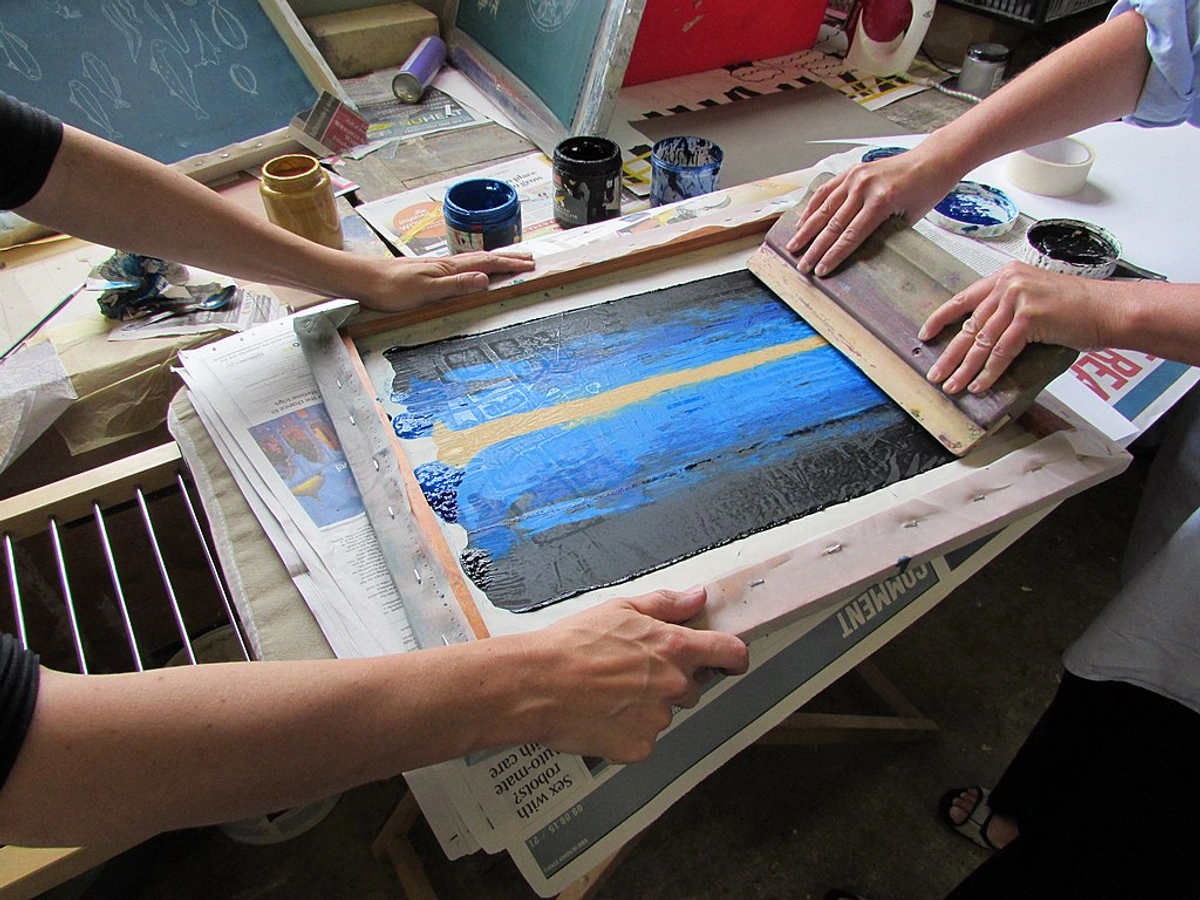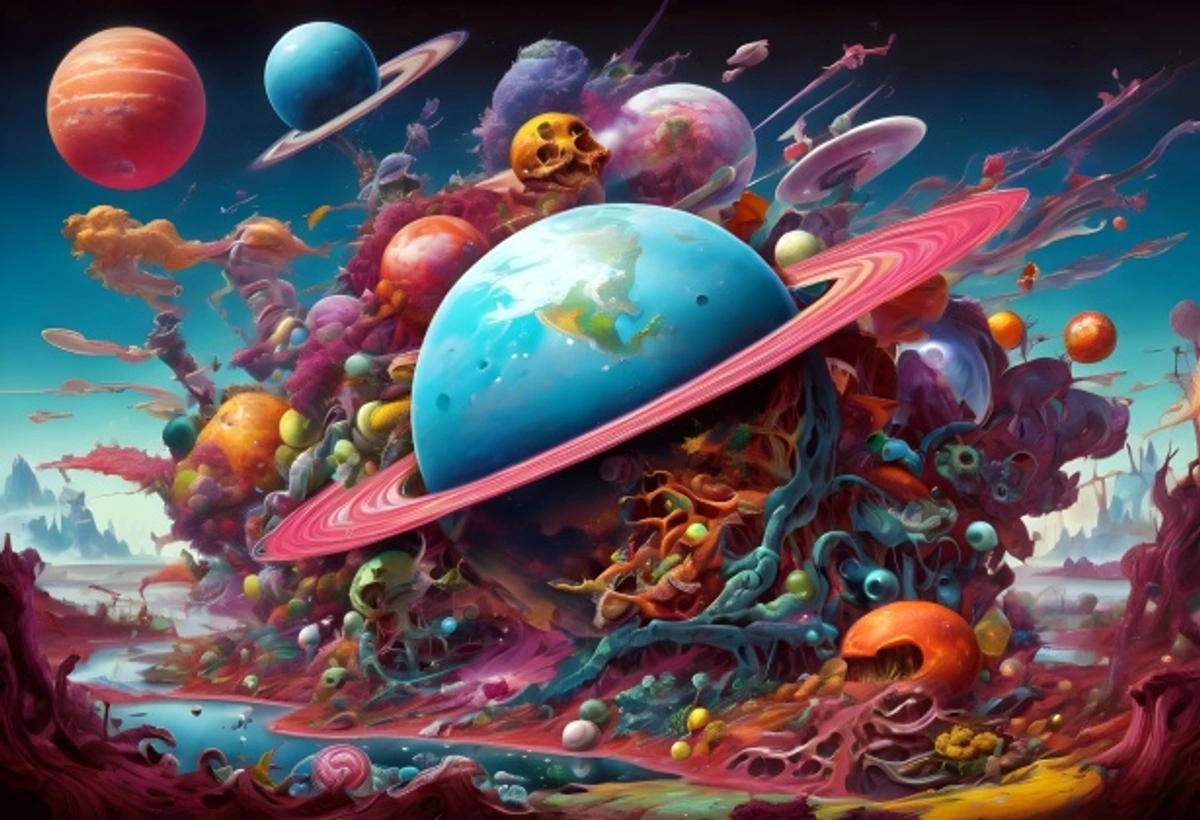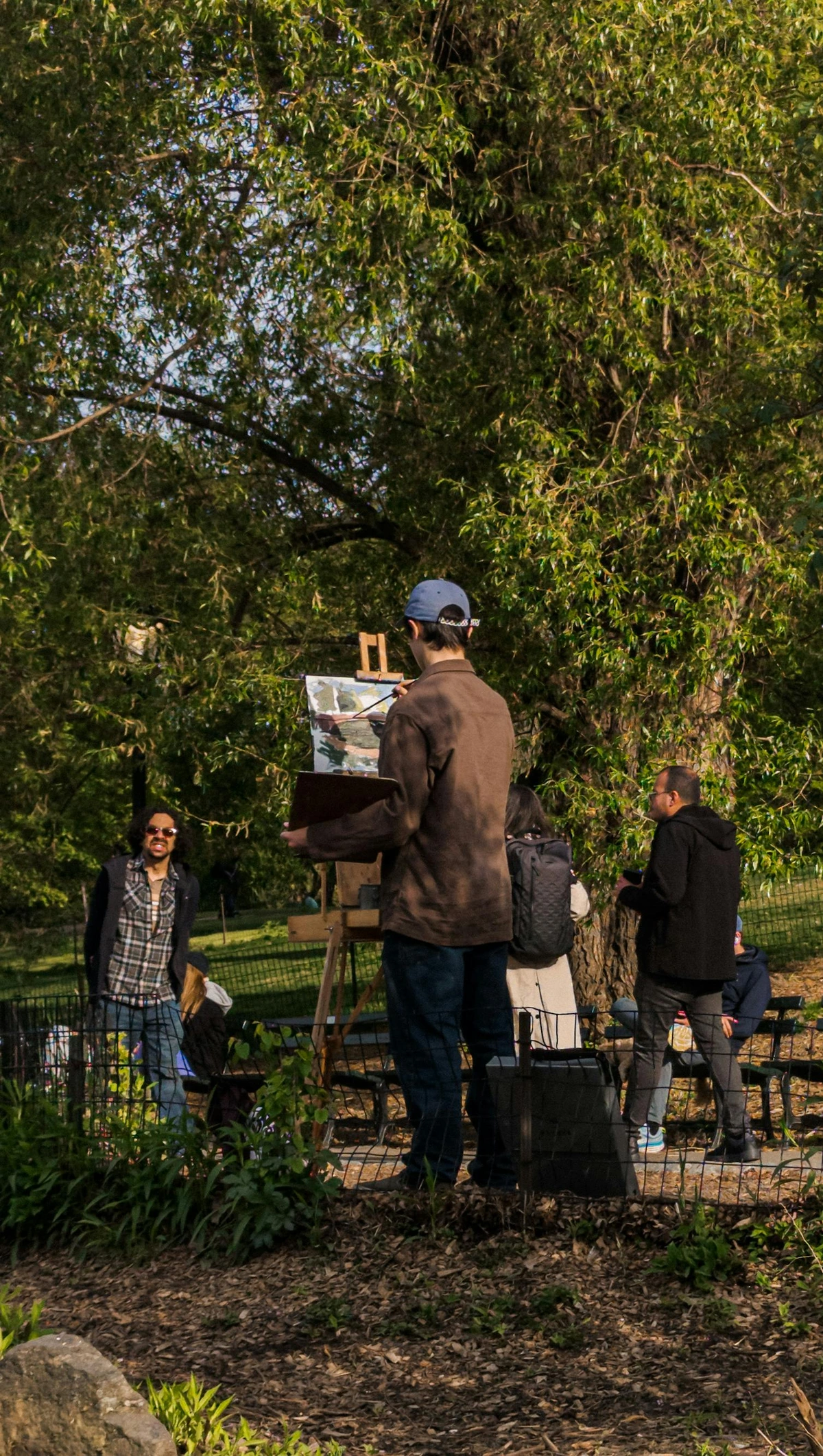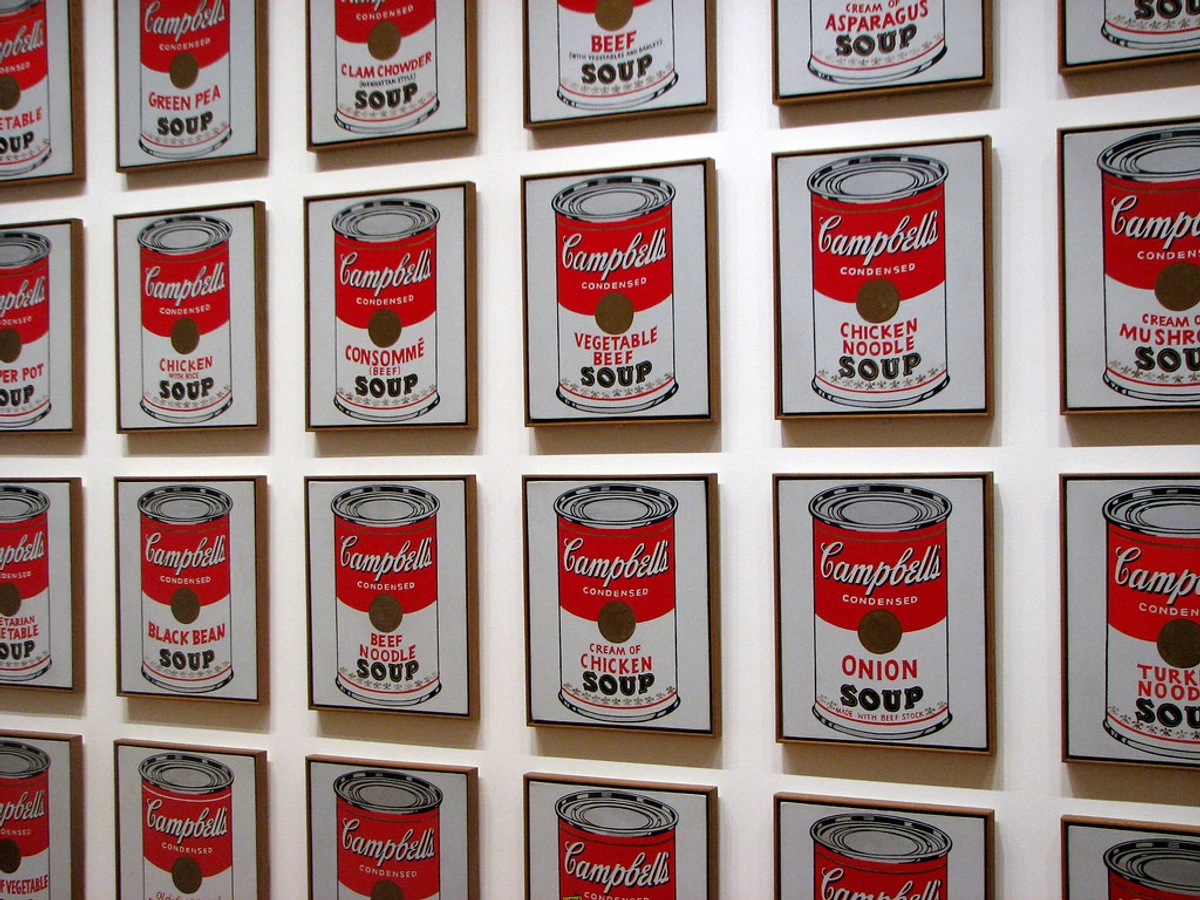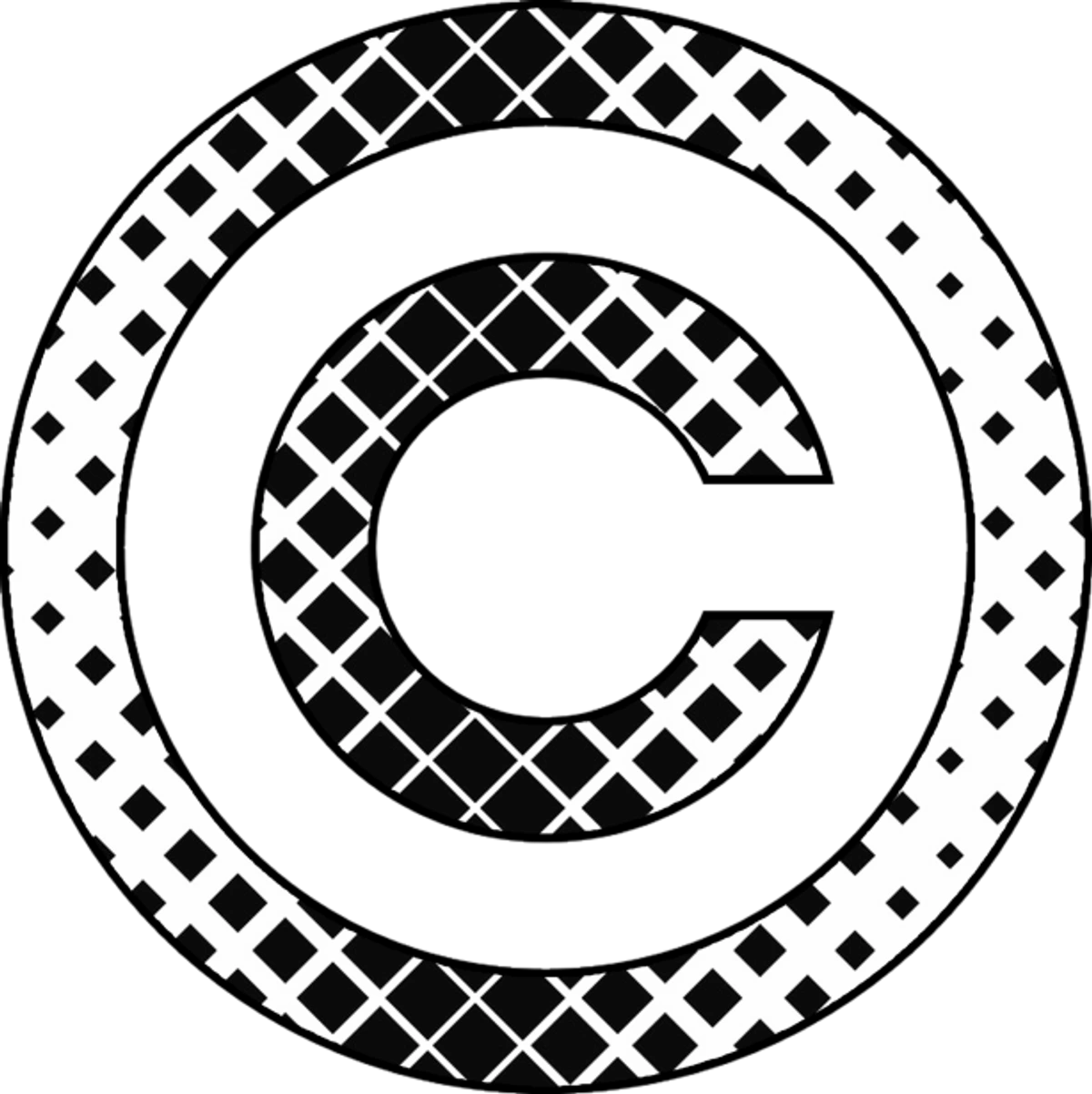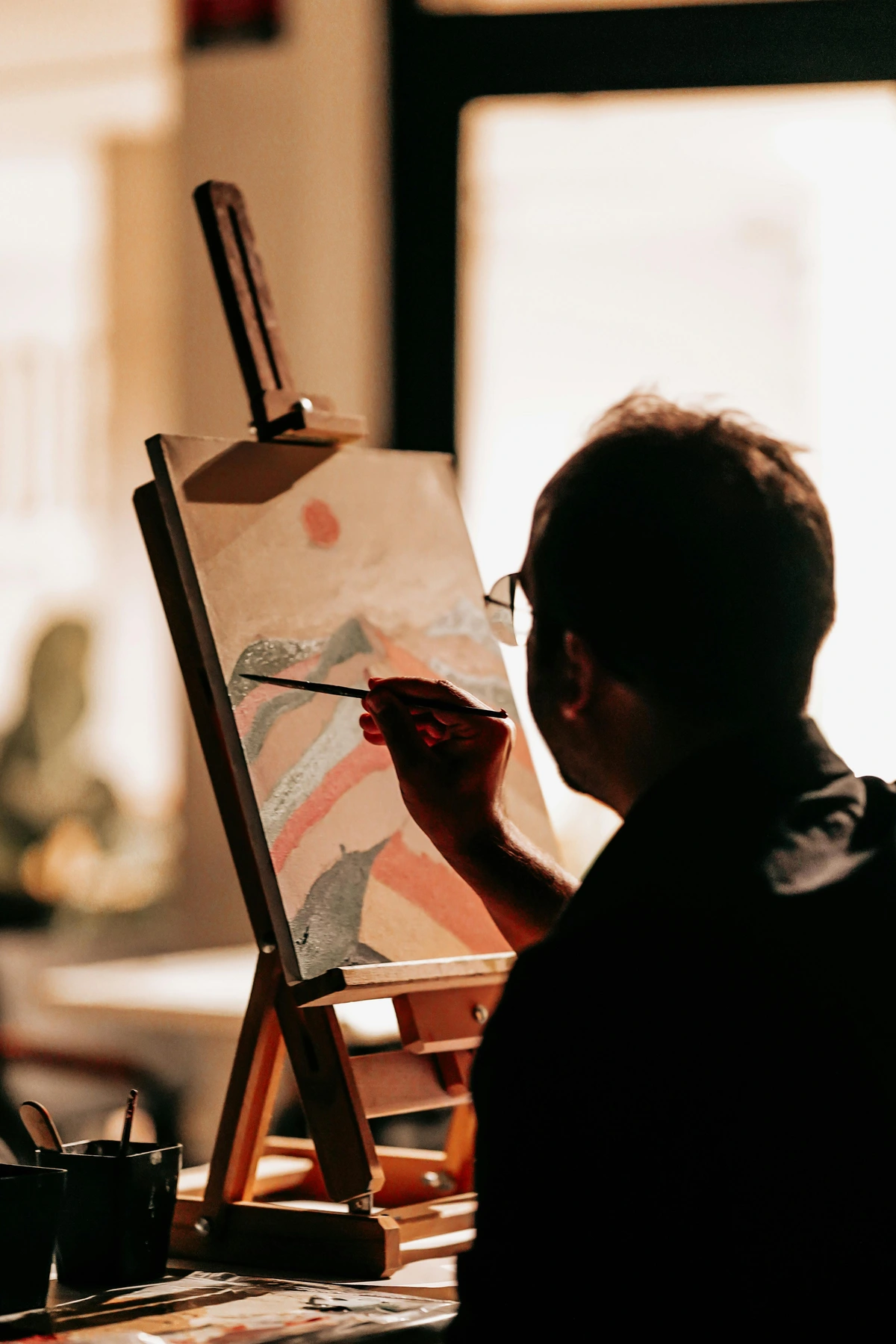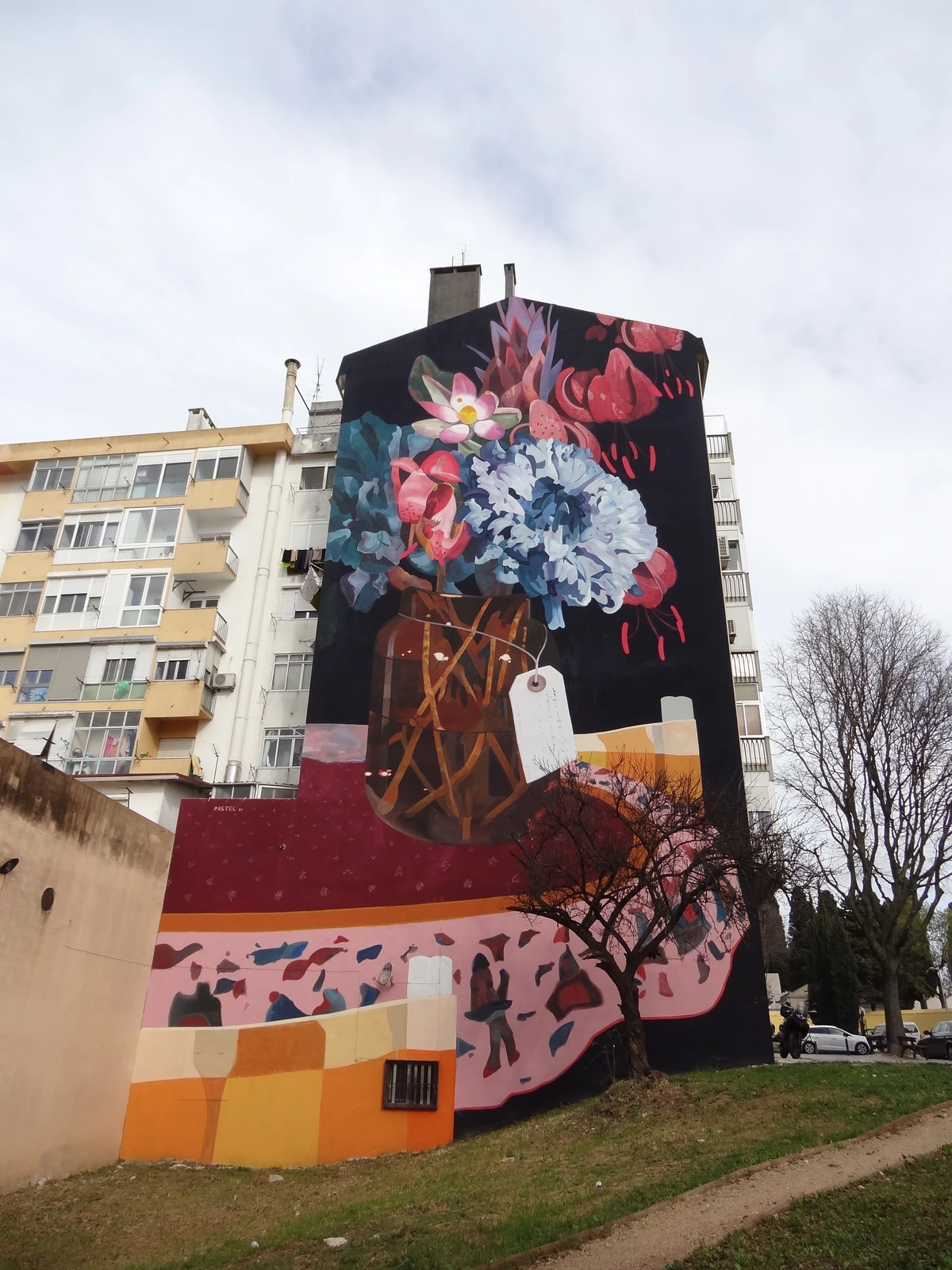
The Rise of Digital Abstract Art: A New Frontier for Collectors
Explore the evolving world of digital abstract art through artist A.D. Poesiat's journey. Discover its diverse forms, pioneering artists, the transformative impact of blockchain, and essential tips for new collectors navigating this vibrant, future-forward market.
The Rise of Digital Abstract Art: A New Frontier for Collectors
A. D. Poesiat: An Artist’s Journey into the Digital Canvas
I’ve always been a bit of a traditionalist at heart, you know? Give me the smell of oil paint, the tactile feel of canvas, the undeniable presence of a physical sculpture. For a long time, the idea of “digital art” felt… well, a little alien, like a conversation you nod along to but don't quite grasp. I probably dismissed it too quickly, like I do with most new technologies until someone else has debugged them for me. I even remember my first clumsy attempts with a digital painting program—the interface felt cold, the brushstrokes unresponsive, and I quickly retreated to my familiar oils. My digital 'masterpieces' often looked more like a toddler's finger painting on a screen. "NFTs? Isn't that just a fancy JPEG?" I'd mutter, sipping my coffee.
But here’s the thing about art, and life for that matter: it never sits still. Just like a river carving new paths, the art world is constantly evolving, and lately, the digital current has become undeniable. We’re not talking about cheesy screensavers anymore. We're talking about incredibly sophisticated, deeply thoughtful, and often profoundly beautiful abstract works created in the digital realm. This isn't just a shift in tools; it's a fundamental redefinition of what art can be, driven by a confluence of technological leaps and cultural readiness. And for collectors, this isn’t just a new fad; it’s genuinely a new frontier.
My moment of clarity? It came when I saw a generative piece evolve in real-time, displaying complexities I simply couldn't achieve with a physical brush—intricate patterns that responded to subtle real-time data inputs, colors that flowed with an inner logic, and forms that seemed to breathe. It was then that I realized the true potential and depth of this art form, a depth that felt akin to watching a living, breathing painting unfold before my eyes, utterly unlike anything I'd experienced with physical art. This wasn't just a screen; it was a window into an entirely new kind of creation.
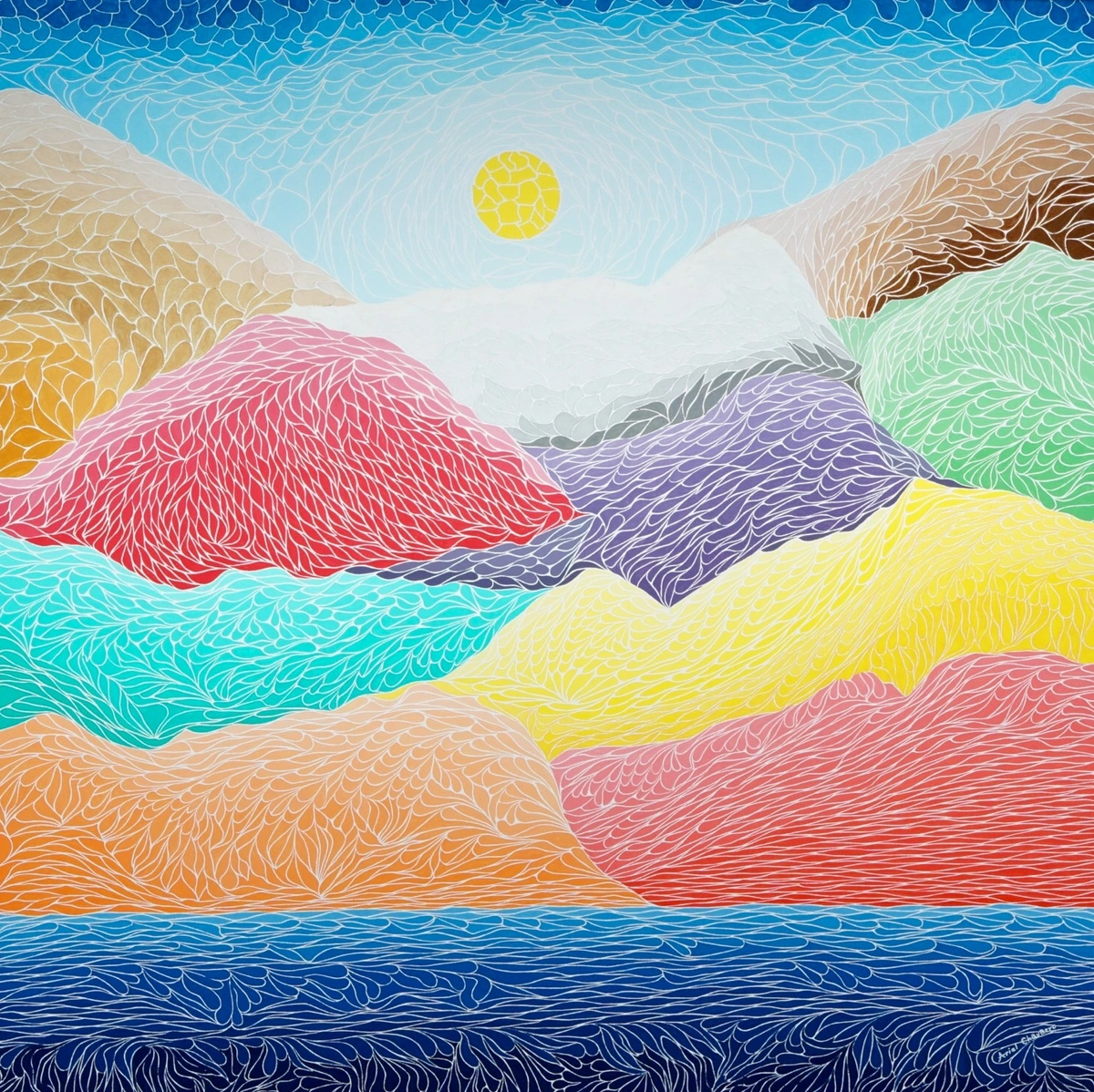
What Even Is Digital Abstract Art?
At its core, digital abstract art is art that doesn't attempt to represent an external reality, created using digital tools. Think about it: instead of brushes and pigments, artists use software, algorithms, and code. Instead of canvas, their medium is the screen, the projection, or even virtual reality environments. The beauty of abstract art has always been its ability to speak directly to emotions, to explore form, color, and texture without the baggage of literal representation. Digital tools simply expand this language, pushing boundaries I honestly didn't think could be pushed further.
While my early digital painting attempts felt clunky, it’s important to acknowledge that digital painting itself—using software to simulate traditional brushes and media—is a foundational technique. However, digital abstract art goes far beyond mere simulation, harnessing the unique capabilities of the digital realm.
These explorations manifest in countless ways, each a unique dance between human creativity and digital possibility:
- Generative Art: Where algorithms create unique patterns, colors, and forms, often with an element of randomness and unpredictability. It's like setting up a complex domino chain and letting it fall in a beautiful, unpredictable way, or like a digital garden that grows its own unique flowers every time you refresh. Think endlessly morphing geometric patterns or swirling nebulae that never repeat. Pioneer artists like Casey Reas, known for his software art and algorithmic compositions, and Vera Molnár, whose early plotter drawings explored geometric permutations, have been exploring these algorithmic possibilities for decades.
- Algorithmic Art: Similar to generative, but often with a more controlled, mathematical precision and predefined rules, creating intricate geometric or organic structures. Imagine a fractal zoom that goes on forever, revealing new complexities, or a piece where every line and shape is calculated to perfection. Manfred Mohr is a prime example of an artist who used algorithms with rigorous precision to create complex, abstract graphics.
- Interactive Art: Pieces that respond to viewer input, creating a dynamic, ever-changing experience. You're not just looking; you're participating. This could be an abstract landscape that shifts colors based on your movement, or a composition that plays different notes as you tap elements on a screen. Artists like Rafael Lozano-Hemmer have mastered interactive installations that often feature abstract elements, responding to biometric data or public participation.
- Video Art & Animations: Abstract forms in motion, exploring rhythm, sequence, and temporal shifts. Consider vibrant, flowing ink blots that endlessly expand and contract, or stark, minimalist lines that dance across the screen to a hidden beat. While perhaps not strictly abstract, the early works of Bill Viola often explored abstract concepts through motion and visual poetry.
- AI-Generated Art: A newer, often debated, but undeniably fascinating category where artists use artificial intelligence models to create abstract compositions, sometimes guiding the AI with prompts, other times letting it explore its own "creativity." It's like collaborating with a hyper-intelligent, albeit slightly alien, assistant. Refik Anadol is a leading artist in this space, creating stunning AI-generated data sculptures and environments that transform complex datasets into mesmerizing abstract visuals.
- Data Art: Where artists use datasets (from weather patterns to stock market fluctuations) as the raw material for abstract visual compositions, turning numbers into compelling visuals. Ryoji Ikeda is well-known for his minimalist and abstract data-driven installations that translate data into sound and stark visual patterns.
- Glitch Art: Art that intentionally incorporates digital errors, corruptions, or artifacts to create aesthetically interesting abstract forms, embracing the imperfect beauty of digital breakdown. Artists like Rosa Menkman have extensively explored and theorized about glitch art, turning digital accidents into intentional artistic expressions.
- Digital Sculpture & 3D Art: This category encompasses abstract forms created in three-dimensional digital space, often rendered as static images, animations, or interactive virtual objects. These can range from intricate geometric constructs to flowing organic shapes, sometimes designed for virtual reality experiences or 3D printing. Artists like Chad Knight create stunning, often surreal, abstract digital sculptures.
It’s a world where the canvas is infinite, and the possibilities are only limited by imagination and computing power. For me, personally, exploring generative art has been particularly fascinating, watching algorithms create patterns I could never conceive with a physical brush—though my first attempts often looked like a glitchy spreadsheet, not art. But let's be clear, while the canvas might be boundless, the artist's hand – their intention, curation, and the skill with which they wield these digital brushes – remains paramount. I've spent countless hours trying to perfect a particular algorithm's output, only to realize a slight tweak in a single parameter could turn a chaotic mess into a harmonious symphony of pixels. It’s a bit like abstract expressionism meeting Silicon Valley, minus the paint splatters on your favorite shirt (though I wouldn't put it past some digital artists to simulate those too).
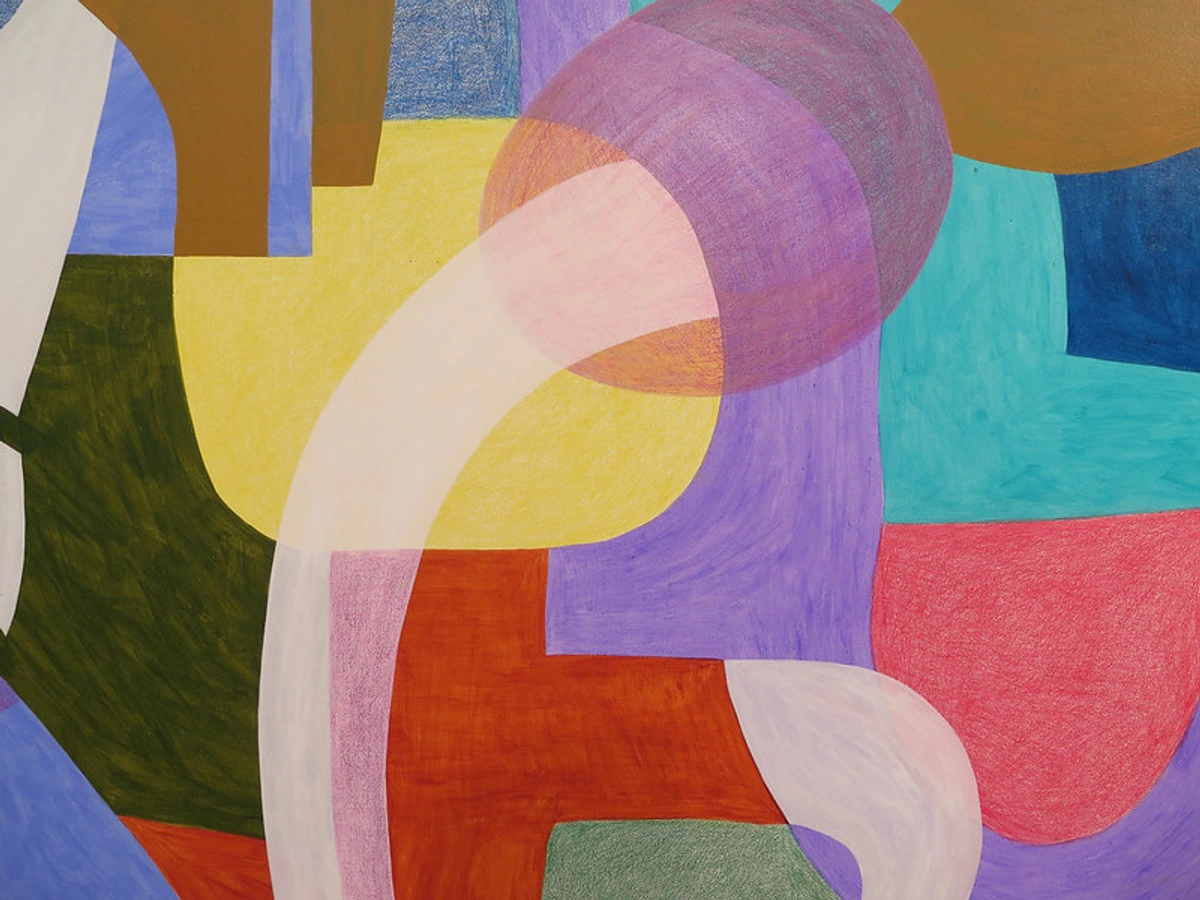
The Digital Canvas: Why Now?
Why is digital abstract art suddenly having its moment? My cynical side, the one that used to grumble about "fancy JPEGs," initially thought it was just hype. But I've come to realize it's not just about technology evolving; it's about a convergence of factors that have made this form of expression, and its collection, truly viable. If you've been following the history of modern art, you'll know that new technologies always influence artistic expression. From photography to cubism, innovation changes everything. And frankly, the idea of digital art isn't as new as some might think; computer art goes back to the 1960s, a quiet hum before the current roar. Pioneers like Manfred Mohr and Frieder Nake were creating algorithm-generated art in the mid-20th century, laying the groundwork for what we see today. Their early explorations proved that machines could be collaborators in the creative process, a concept that now, with AI, feels less like science fiction and more like an everyday tool.
- Technological Advancements: Faster processors, more sophisticated software (like advanced 3D modeling tools, generative design platforms, real-time rendering engines, and even game engines like Unity or Unreal Engine), and better display technologies (hello, 8K screens!) mean artists can create incredibly detailed and complex works that were impossible a decade ago. Powerful GPUs, cloud computing for intensive rendering, and open-source creative coding frameworks like Processing or OpenFrameworks have unlocked new levels of complexity and speed in digital creation. It’s like moving from a crayon to a whole art studio overnight. The tools have caught up with the ambition.
- Accessibility & Global Reach: Digital art transcends geographical boundaries. An artist in Tokyo can sell to a collector in Berlin instantly. This democratizes the art world in a way we’ve never seen, opening up a truly global market. It’s also made creating art more accessible; you don't need a huge studio space or expensive materials to start experimenting. For me, as an artist, connecting with collectors and other creatives across continents through digital platforms has been a profound experience, opening up entirely new avenues for collaboration and reach. Furthermore, the rise of social media platforms and dedicated online art communities has dramatically amplified the visibility and discovery of digital artists, fostering a vibrant ecosystem.
- The Rise of NFTs & Blockchain: Ah, the dreaded acronyms! But seriously, this is the game-changer. For years, the big question was: how do you own a digital file when it can be endlessly copied? NFTs (Non-Fungible Tokens) on the blockchain provide verifiable proof of ownership and authenticity. Think of the blockchain as a public, unchangeable ledger, a shared, digital history book where every transaction and ownership transfer is recorded transparently and permanently. It’s like getting a digital certificate of authenticity that can’t be faked, a digital deed of trust. Crucially, smart contracts embedded within NFTs allow artists to receive royalties on secondary sales, a revolutionary aspect for artist sustainability. This finally gave collectors confidence in the scarcity and value of digital works. My own journey from "fancy JPEG" skepticism to understanding the underlying mechanism was a bit like learning a new language – confusing at first, but incredibly liberating once it clicked.
- Cultural Shift & Digital Natives: The world has embraced digital experiences. A generation has grown up with screens as their primary interface, comfortable with virtual economies, digital assets, and online communities. This innate comfort with the digital realm makes collecting digital art a natural extension of their lifestyle, seeing inherent value in what might appear intangible to older generations.
It's still early days, and the landscape is shifting rapidly, but the underlying mechanisms for value and ownership are now firmly in place. It's a bit like the internet itself in the early 2000s – clunky, confusing, but undeniably world-changing.
Bridging the Gap: From Pixels to Passion – The Collector's Allure
So, beyond the tech, what’s the real magic for collectors? Why would someone invest in something that lives on a screen? My initial thought was, "Well, it's not a painting you can touch," but then I remembered how what makes abstract art compelling often transcends the physical. It’s about the idea, the emotion, the connection. For digital art, I think it boils down to a few compelling reasons:
- Innovation & Forward-Thinking: Collecting digital abstract art is about being at the forefront. It’s an investment in the future of art, supporting artists who are pushing boundaries and exploring new mediums. It says, "I understand that art isn't static, and I'm here for the evolution."
- Accessibility & Lower Entry Points: Unlike traditional art, which often carries significant overheads (shipping, insurance, physical gallery space), digital art can sometimes offer more accessible entry points for new collectors. You can discover incredible talent on platforms from the comfort of your home, and sometimes, the initial investment can be more manageable than a large physical painting. I distinctly remember the pleasant surprise of finding stunning, high-quality digital prints for a fraction of what a comparable physical piece might cost, making the art world feel genuinely more inclusive. It opens up the art world to a broader audience, which I find genuinely exciting. However, it’s worth noting that just like physical art, high-end digital art (especially certain rare NFTs or works by established digital artists) can also command significant prices, so the market ranges widely.
- Unique Display Possibilities: This is where it really clicks for me. While I still adore a physical piece, the way you can display digital art is mind-bendingly cool. We're talking high-resolution digital frames like Meural or Infinite Objects that make the work pop, immersive projections that transform a room, or even experiencing art in virtual reality. Trying to explain the appeal of a beautifully rendered digital frame displaying a generative artwork to my traditionally-minded aunt was an experience, but once she saw it, even she grudgingly admitted it was "quite something."
- Evolving & Interactive Nature: Some digital abstract artworks aren't static. They might evolve over time based on an algorithm (e.g., a piece that changes its color palette based on real-time weather data in the collector's city), react to real-time data, or even allow collector interaction, creating a unique, ever-changing experience. You're collecting something alive, something that breathes and shifts. It's truly a new dimension, and it’s something I find myself increasingly drawn to, perhaps because my own creative process often involves a dance with unpredictability.
- Vibrant Community & Direct Artist Support: The digital art space, particularly around NFTs, has fostered incredibly active and passionate communities. You can connect directly with artists, engage in discussions, and feel like you're truly part of a movement. And for artists, this often means a more direct and transparent way to sell their work and receive royalties on secondary sales, providing a sustainable path for their creative journey. This sense of direct connection, bypassing traditional gatekeepers, felt revolutionary to me, fostering a genuine, shared passion that's both invigorating and inspiring.
- Transparency & Verifiable Provenance: Thanks to the blockchain, every transaction and ownership transfer is immutably recorded. This offers collectors unprecedented transparency into an artwork's history and authenticity, a level of verifiable provenance often more robust and accessible than in traditional art markets.
Navigating the Digital Art Market: A Collector's Compass
So, you’re intrigued, perhaps even a little tempted, by this digital frontier. But where do you even begin? It’s not like walking into a traditional gallery (though some are certainly embracing digital art now). Think of me as your slightly bewildered, but now slightly less bewildered, guide to this new landscape. My own initial attempts felt like fumbling in the dark, once accidentally listing an NFT for a price well below market value due to a decimal point error – a lesson learned the hard way, but one that ultimately sharpened my attention to detail!
Where to Find Digital Abstract Art
Platform Type | Description | Key Examples |
|---|---|---|
| Curated Online Platforms | Often have rigorous curation processes, offering a degree of quality assurance and a focus on high-quality art. | SuperRare, KnownOrigin, Foundation, Art Blocks |
| Decentralized Marketplaces | Large, open marketplaces where a vast variety of art is listed. Requires more diligence from the buyer due to open nature. | OpenSea, Rarible |
| Artist Websites & Studios | Many digital artists showcase and sell their work directly, offering a more personal connection. | (Direct Artist Websites) |
| Hybrid Galleries & Museums | Increasingly integrating digital art into their collections and exhibitions, bridging the physical and digital worlds. | Pace Gallery, Fotografiska (exhibiting digital art) |
| Online Art Fairs & Exhibitions | Virtual events and dedicated online platforms hosting curated digital art shows. | Art Basel Online Viewing Rooms, Decentraland Art Week |
Key Considerations When Evaluating a Piece
Beyond aesthetic appeal, digital art requires a slightly different checklist:
Aspect | Why it Matters |
|---|---|
| Artist's Reputation & Track Record | Just like in traditional art, the artist's history, previous works, and presence in the community matter. Research their past sales, exhibitions (digital or physical), and engagement within the digital art community. |
| Smart Contract & Token Standard | This is crucial! A smart contract is a self-executing agreement coded onto the blockchain that defines the rules of ownership, royalties for the artist on secondary sales, and how the token interacts with marketplaces. Understanding if it's an ERC-721 (unique, non-fungible, think of it like a unique deed for a specific house) or ERC-1155 (semi-fungible, allowing multiple editions, like a concert ticket where many identical tickets exist) token is key to understanding its digital provenance and scarcity. |
| File Format & Resolution | How is the art delivered? Is it a high-resolution image, a video file, or an interactive program? Ensure it's suitable for your intended display and that the quality meets your expectations. |
| Provenance | While NFTs establish ownership, understanding the artwork's history – who has owned it, how it has moved, and if it's been authenticated by a recognized platform – adds to its value and authenticity. Look for a clear chain of ownership on the blockchain. |
| Storage & Hosting of Artwork File | Understand where the actual digital art file is stored. Is it on-chain (rare for large files), decentralized storage (like IPFS or Arweave), or a centralized server? Decentralized storage offers more resilience and long-term accessibility, preventing "link rot" or the artwork disappearing if a centralized server goes down. |
| Licensing & Usage Rights | Clarify what rights you are acquiring. Owning an NFT typically grants ownership of the token itself, not necessarily the copyright or commercial usage rights to the underlying artwork. Always review the terms associated with the specific NFT purchase for clarity on personal display vs. commercial use, etc. |
| Gas Fees / Transaction Costs | These are the fees paid to the blockchain network to process and validate your transaction (e.g., buying an NFT). They can vary significantly based on network congestion and the blockchain used, so be mindful of them as they add to the total cost. Consider blockchains like Polygon, Tezos, or Solana, which often have significantly lower gas fees compared to Ethereum. |
| Community Engagement & Research | Many digital art projects thrive on active communities. Research the artist's or project's presence on platforms like Discord, Twitter, and art forums. A strong, engaged community can indicate long-term viability and support for the artwork. |
| Roadmap & Utility | Beyond the artwork itself, many NFT projects offer additional value or future plans (a "roadmap") for holders. This could include access to exclusive communities, future art drops, real-world events, or even voting rights in a decentralized autonomous organization (DAO). Understanding the project's utility can be a significant factor for collectors. |
Displaying Digital Art Effectively
This is where the magic happens! Don’t just let it languish in a digital wallet.
- Dedicated Digital Frames: High-quality screens designed specifically for art display (e.g., Meural, Infinite Objects, or Samsung's The Frame) can make a digital piece truly shine in a physical space, often resembling a traditional framed artwork.
- Projectors: For large-scale, immersive experiences, a projector can transform a wall into a dynamic canvas, bringing abstract motion to life across an entire room.
- Tablets & Monitors: Smaller, more intimate pieces can be displayed on tablets or even high-resolution computer monitors, perfect for a desk or bookshelf.
- Smart TVs: Many modern smart televisions can display high-resolution images and videos, offering a convenient way to integrate digital art into your living space without specialized equipment.
- Physical Installations: Some artists create works designed to be displayed as part of a physical installation, blurring the lines between digital and tangible, turning screens into sculptural elements.
Securing Your Digital Assets
- Use a Reputable Wallet: Choose a secure cryptocurrency wallet (e.g., MetaMask) to store your NFTs. For enhanced security, especially for valuable assets, consider a hardware wallet like Ledger or Trezor.
- Practice Good OpSec: Be wary of phishing scams, never share your seed phrase, and use strong, unique passwords. Your digital assets are as valuable as physical ones, and you wouldn't leave a valuable painting on your doorstep, would you? (Unless it was part of some performance art piece, and even then, I'd probably put a security camera on it).
Addressing the Skeptics: Is it Really Art?
Now, before you go off buying a digital masterpiece, let's address the elephants in the room – the criticisms, the doubts, the questions I myself wrestled with. Because if I’m honest, for a long time, the biggest hurdle wasn't understanding the tech, it was convincing myself this was real art.
The ingrained notion of art as something tangible, something you can physically touch or hang on a wall, was hard to shake. But then, as with many deeply held beliefs, I started poking holes in it.
- "But I Can Just Right-Click Save That Image!" Ah, the classic. And yes, you can. But owning a high-resolution digital image isn't the same as owning a verifiable, immutable NFT that links directly to the artist’s creation and its unique place on the blockchain. The key here is scarcity and provenance. An NFT provides verifiable, digital scarcity for a digital asset, much like an original signed, limited-edition print versus a mass-produced poster. It’s like taking a photo of the Mona Lisa; you have an image, but you don't own the Mona Lisa. NFTs provide that unique, verifiable proof of ownership in a world of infinite copies. It shifted my perspective from "this is just a file" to "this is a digital original."
- Environmental Concerns: This is a valid point, and one I grapple with. Early blockchain technologies (like Bitcoin and Ethereum before its recent upgrade) were indeed energy-intensive. I remember my own initial research into this, a knot forming in my stomach at the thought of the energy consumption. However, the move to more energy-efficient consensus mechanisms like Proof-of-Stake (which Ethereum now uses) is significantly reducing the carbon footprint of NFTs. Furthermore, many NFT projects are now deployed on inherently energy-efficient blockchains like Tezos, Solana, and Polygon. Beyond these technological shifts, many artists and platforms are actively engaged in carbon offsetting initiatives or building on eco-conscious chains from the outset. It's an evolving space, and responsible artists and platforms are prioritizing sustainability.
- Market Volatility & Speculation: Let's be real, the digital art market has seen its share of hype and speculative bubbles. Prices can fluctuate wildly. This isn't unique to digital art – the traditional art market has its own wild swings and hidden machinations – but it's amplified by the speed and global nature of crypto. My take? Approach it like any art investment: focus on artists whose vision resonates with you, understand the long-term value of their work, and don't just chase the next viral trend. Prioritize artists with a strong artistic vision and a committed community rather than solely focusing on short-term "floor prices." Always conduct thorough due diligence and only invest what you are comfortable losing, just as you would with any speculative asset.
- "It Lacks Soul/Physical Presence." This was perhaps my hardest internal battle. The smell of oil, the texture of canvas… those are visceral experiences. But then I realized, abstract art has always pushed beyond literal representation. It speaks to emotion, form, and pure aesthetic. Digital abstract art does this too, just through a different medium. The "soul" isn't in the paint; it's in the artist's intention, the composition, the emotional impact. And seeing a vibrant, dynamic digital piece on a high-res screen can be just as captivating, just as soul-stirring, as a physical one. It simply requires a different kind of appreciation, a new sensory pathway.
- Copyright & Intellectual Property: A common misconception is that owning an NFT means you own the copyright or all intellectual property rights to the artwork. Typically, an NFT is proof of ownership of the token itself, not necessarily the underlying artwork's IP. Artists usually retain these rights. It's a complex and evolving legal area, so always review the terms associated with any NFT purchase.
Conclusion: The Unfolding Canvas of Tomorrow
So, from a skeptic sipping coffee and muttering about JPEGs, I’ve become someone who sees digital abstract art not just as a passing trend, but as a vital, evolving frontier for artistic expression and collection. It's a space where technological innovation meets boundless creativity, where new forms of beauty are constantly being discovered.
The convergence of advanced tools, global accessibility, and the revolutionary power of blockchain has firmly cemented digital abstract art's place in the contemporary art world. It offers a unique allure for collectors – an opportunity to be at the forefront of innovation, to experience art in dynamic new ways, and to directly support artists who are bravely venturing into the digital unknown.
The path isn't without its questions or challenges, just like any artistic movement throughout history. Artists in this space, too, grapple with unique hurdles – from ensuring their works stand out amidst the sheer volume of a crowded digital marketplace to navigating the complexities of establishing intellectual property rights for AI-generated works. Yet, what remains undeniable is the sheer creative energy pouring into this space. As the market matures and becomes more saturated, the importance of strong curation will only grow, helping collectors navigate the vast landscape and discover truly impactful works.
Looking ahead, imagine even deeper integration with augmented and virtual reality. Envision AR overlays transforming your living room wall into an evolving abstract landscape, or stepping into a VR gallery where you can walk through a Kandinsky-esque digital world. Display technologies will only get more sophisticated, making digital art even more seamless in our physical environments. It’s a testament to art’s enduring capacity to adapt, to surprise, and to reflect the ever-changing landscape of human experience.
For me, the journey continues, and I'm thrilled to explore how my own creative expression can expand and flourish on this ever-unfolding digital canvas. If you, like me, once hesitated at the edge of this digital sea, I encourage you to dip your toes in. Explore, question, and perhaps even find a piece that speaks to you, living vibrantly on a screen, ready to tell its story – just as I continue to discover new narratives in my own digital creations.
You can find many of my own works and how I approach abstract creation, both physical and digital, at my art for sale page. To see how my own artistic journey has unfolded, marked by various explorations and shifts in medium and style, you can explore my timeline. And for those curious about how traditional and digital art converge in physical spaces, keep an eye on places that blend the two, like my museum in 's-Hertogenbosch. We are actively exploring ways to showcase digital pieces alongside physical ones, perhaps through interactive projections that respond to visitor movement, or dedicated immersive rooms where digital art envelops the viewer, creating a truly hybrid experience for visitors. It's a testament to how art constantly finds new forms and new homes, whether on a canvas, a screen, or within the very fabric of a city.
To truly immerse yourself, consider engaging with the broader digital art community. Join online forums, follow digital artists on social media, and participate in discussions to discover new talent and deepen your understanding of this vibrant space.
The canvas of tomorrow is unfolding, pixel by pixel, and it's nothing short of compelling.


